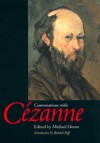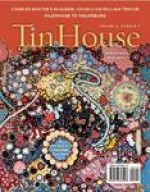Cezanne, Eisenberg, and the question of rape
“Either you see a picture immediately,” Cezanne told the writer Joachim Gasquet, “or you never see it at all.
Explanations don’t help a bit. What good does it do to comment on it? All those things are imperfect, imprecise things. We talk as we do because it’s amusing, like drinking a good bottle of wine.
From Conversations with Cezanne.
And here is Deborah Eisenberg, more than 100 years later, talking to Anna Kesey in Tin House (no. 34*):
…I’m always perplexed when a reader is perplexed, when a reader says to, or of, one of my stories, “What was that?” I think, Well, it’s what I said it was. It’s the thing I said.
Can explaining a story degrade a reader’s experience of that story, even if you’re not remotely a Cezanne or an Eisenberg? I promise not to go on about my own work much, but people often ask about “Jazz,” which opens my collection with the sentence “It is not true that if a girl squeezes her legs together she cannot be raped.” Rainey Royal’s legs have been parted by the knee of Richard, who is 39 and her father’s best friend—but she’s confused by her own sexual powers, and she isn’t sure it’s rape.
And readers want to be sure. Most think it’s rape: Rainey is 13, and Richard is 39. She says no, and he ignores her.
But she doesn’t scream. She’s been seductive with him. She accompanied him to the park, though her father sent them there at night for a concert. “She knows exactly what she’s doing,” one woman said.
Thus the question: rape, or seduction? And that’s consummation at the end, right?
I never answer directly, though after reading Cezanne and Eisenberg last week, I’ll work harder to tell readers why. It’s not that they’re missing something (unless the writing is flawed). It’s that a story and the question it poses cannot be teased apart, and also that once written, a story belongs to its readers.
It’s what I said it was. It’s the thing I said.
Sometimes I quote Michael Silverblatt, who does the legendary author-interview show The Bookworm on KCRW public radio, Los Angeles:
A short story is like a flower. It should keep opening in your mind long after you finish reading it.
♥
*The extraordinary painting on the Tin House cover, “Jazzy,” is by New York artist Marilyn Greenberg.
♥
EVENTS, DC AREA & BALTIMORE (self-promotion alert; two of my own are here–a new literary collaboration with Eileen Fisher, a designer I adore.)
Thursday, January 28, 4 p.m. — reading, signing, & shopping! A literary salon at the Eileen Fisher clothing store, with “sips & treats.” I’ll be reading from my collection, Normal People Don’t Live Like This. Tysons Galleria, McLean, VA. RSVP if possible: 703.288.1802 $25 off clothing purchase.
Saturday, January 30, 1 p.m. — reading, signing, & shopping! The second DC-area literary salon for Eileen Fisher, with “brunch bites” served. The Shops at Wisconsin Place, Chevy Chase, MD. I’ll be reading from Normal People Don’t Live Like This. RSVP if possible: 301.654.9811 $25 off clothing purchase.
Saturday, January 30, 8:05 p.m. (doors open at 7) — Literary Death Match, Baltimore Edition. The Windup Space, 12 West North Avenue, Baltimore: map Appearing: Michael Kimball, Jessica Henkin, Rafael Alvarez. Competing: Michael Hughes, Mike Young, Jen Michalski and Dave Housley. Hosting: Todd Zuniga. Or read it all here.
JOHN ASHBERY teaching & reading Tuesday, February 2, at Georgetown University, 5:30 p.m. seminar in ICC 462; 8 p.m. reading in Copley Formal Lounge; free; details.

